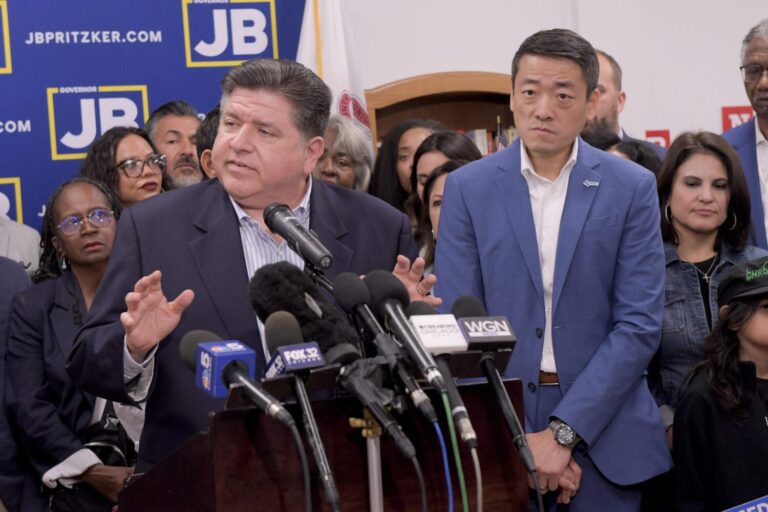Texas Democrats Stage Walkout to Halt GOP Redistricting Plan
In a bold political gambit, Texas House Democrats have deliberately left the state to prevent a quorum after Republicans advanced a highly disputed congressional redistricting proposal through committee. This calculated absence effectively paused legislative business, drawing national attention to the fierce contest over redrawing district lines that critics say heavily favor Republican candidates. By fleeing Texas, Democrats aim to stall the process and amplify concerns about equitable representation and voter fairness ahead of the next election cycle.
The walkout has ignited polarized responses: Republican officials denounce it as a disruptive tactic undermining governance, while Democrats defend it as a vital form of protest against what they view as partisan manipulation. Central issues fueling the conflict include:
- Claims of deliberate partisan gerrymandering embedded in the new district boundaries
- Fears that minority communities will face diluted voting power and fragmented neighborhoods
- Anticipated legal battles challenging the constitutionality of the redistricting scheme
| Political Party | Stance on Redistricting | Recent Action |
|---|---|---|
| Democrats | Reject current map | Walked out, exited state |
| Republicans | Endorse map | Passed map in committee |
How the GOP’s Redistricting Reshapes Texas Politics
The recently approved Republican congressional map in Texas dramatically shifts the political landscape by reinforcing GOP strongholds and fracturing districts that have traditionally supported Democrats. This redistricting strategy appears designed to cement Republican control in key areas, potentially weakening minority representation and altering voter demographics in ways that could influence election outcomes for years. The process has sparked widespread debate about transparency, fairness, and the integrity of democratic representation.
The Democrats’ decision to break quorum and leave the state highlights the gravity of these changes. Key consequences of the new map include:
- Decreased electoral competitiveness in several battleground districts, favoring Republican candidates
- Likely legal disputes focusing on allegations of racial and partisan gerrymandering
- Potential shifts in legislative priorities as district realignments may influence policymaking
| District Category | Before Redistricting | After Redistricting |
|---|---|---|
| Solid Republican | 18 | 23 |
| Competitive | 10 | 5 |
| Solid Democrat | 11 | 8 |
Democratic Countermeasures and Legal Challenges to GOP Redistricting
In reaction to the GOP’s controversial redistricting blueprint, Democratic legislators are mobilizing a comprehensive response. Their initial tactic of breaking quorum by leaving Texas is part of a broader strategy to delay legislative approval and spotlight what they describe as voter suppression efforts. Beyond this, Democrats are preparing to launch extensive legal challenges, alleging that the map violates voting rights laws by engaging in racial gerrymandering and partisan bias.
Collaborating with civil rights groups, Democratic legal teams plan to pursue federal court cases aimed at invalidating the map. Their legal approach includes:
- Allegations of constitutional breaches, particularly violations of the Equal Protection Clause under the 14th Amendment
- Presentation of demographic data demonstrating discriminatory effects on minority voters
- Utilization of precedent-setting court rulings that address electoral fairness and redistricting standards
| Action | Goal | Expected Result |
|---|---|---|
| Quorum Break | Delay legislative process | Increase media and public scrutiny |
| Litigation | Contest map legality | Potential injunction or redrawing of districts |
| Public Advocacy | Mobilize voter awareness | Heightened political pressure on lawmakers |
This combined political and judicial effort reflects the high stakes of Texas’s redistricting fight, which will shape congressional representation and influence national policy debates for the foreseeable future. Democrats anticipate a prolonged legal battle that will test the boundaries of electoral law and state governance.
Encouraging Bipartisan Cooperation to Resolve Redistricting Disputes
To move beyond the current impasse, establishing inclusive and transparent forums where both parties can engage constructively is essential. Such platforms should ensure equal representation from Republicans and Democrats, fostering dialogue that builds trust and mutual respect. Transparency is key—allowing public observers and experts to participate can help ensure the redistricting process serves the broader community rather than partisan interests.
Implementing clear, shared principles can guide negotiations toward fairer outcomes. Prioritizing respect for existing community boundaries, equitable representation, and reliance on objective data analytics can create common ground. Consider these recommended measures:
| Recommendation | Intended Benefit |
|---|---|
| Independent Redistricting Commission | Reduce partisan bias by entrusting map drawing to neutral experts |
| Community Engagement Sessions | Incorporate public input to ensure districts reflect real demographic and cultural ties |
| Open Data Access | Promote accountability by sharing all mapping data and simulations publicly |
Conclusion: Navigating the Complexities of Texas Redistricting
The unprecedented walkout by Texas House Democrats highlights the escalating tensions surrounding the state’s redistricting process, while the GOP’s passage of the new congressional map deepens partisan divides. With both parties entrenched in their positions, the battle over Texas’s district boundaries is poised to continue through legal challenges and political standoffs. This ongoing conflict will have significant implications for representation and policy direction in Texas and beyond. Stay tuned as this critical story unfolds, shaping the future of electoral fairness in the Lone Star State.




